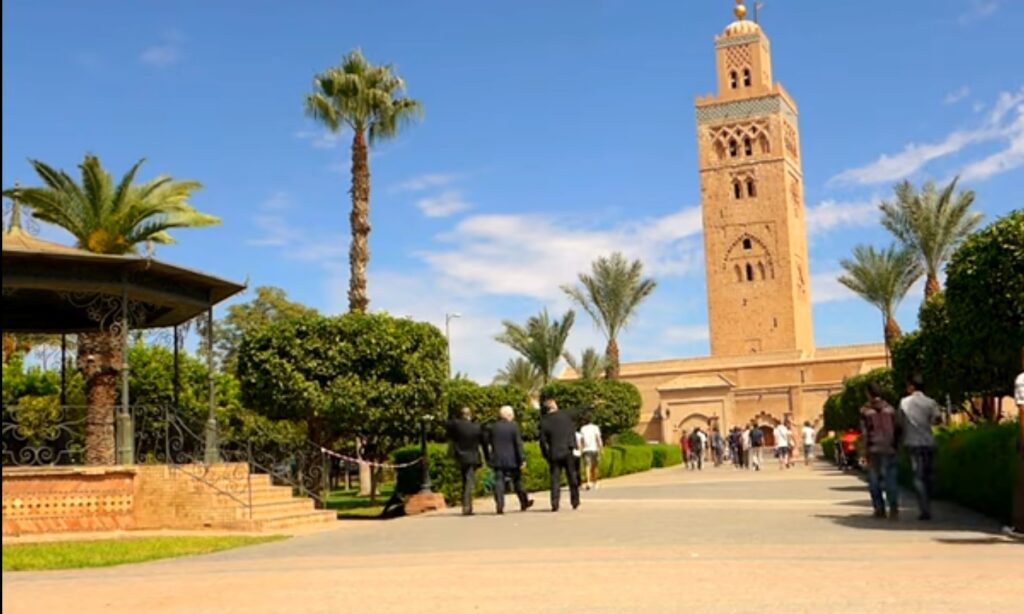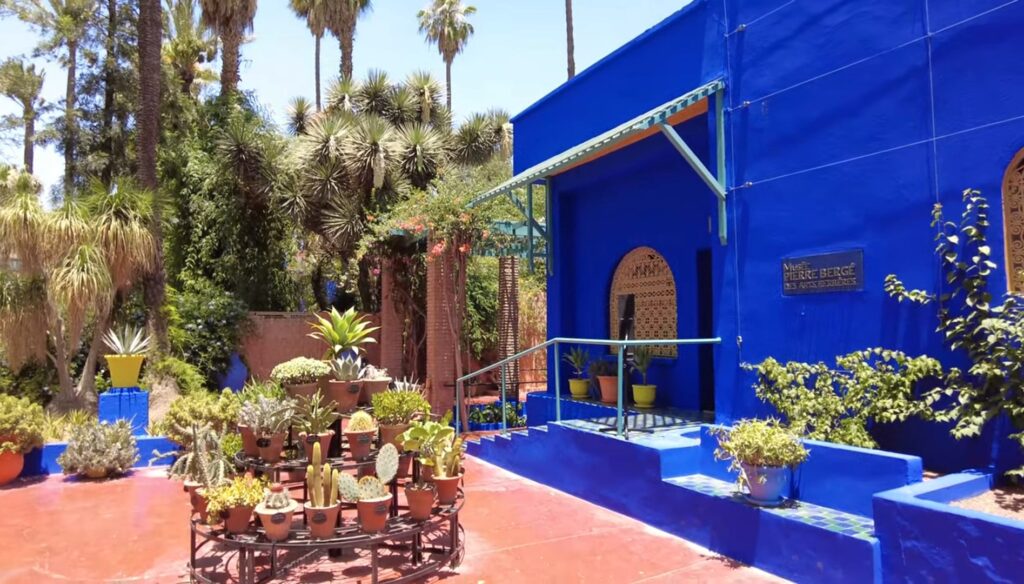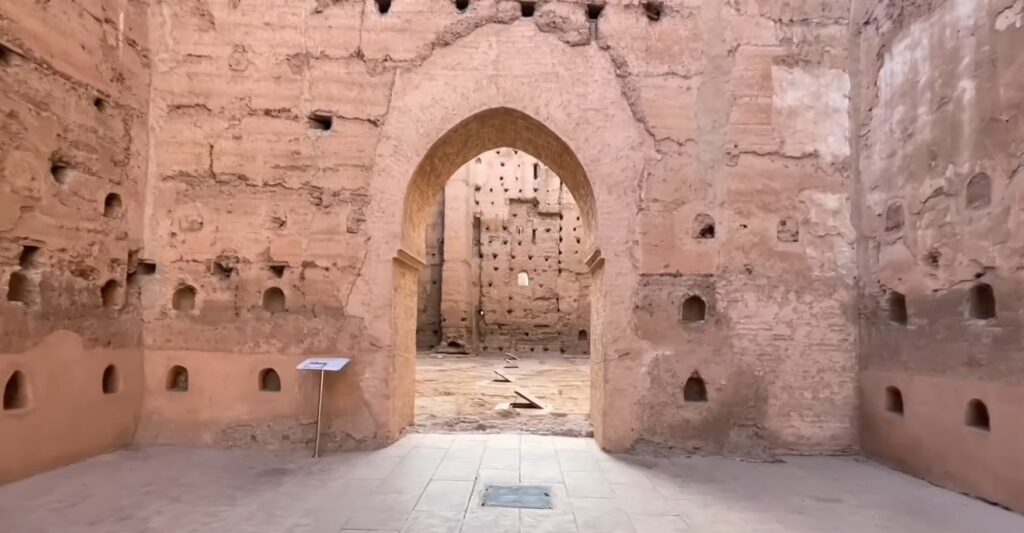The Koutoubia Mosque, also known as Jami’ al-Kutubiyah or the Mosque of the Booksellers, is a magnificent religious monument and a symbol of Marrakesh’s rich history. Situated in the southwest medina quarter of Marrakesh, Morocco, it holds a significant place in the hearts of locals and visitors alike.
The Koutoubia Mosque is a historic mosque located in Marrakech, Morocco. It is known for its stunning architecture, intricate decoration, and important role in the city’s religious and cultural heritage. Here’s a closer look at the mosque’s history and what visitors can expect to see when exploring this iconic landmark.
History and Culture
The mosque was founded in 1147 by the Almohad caliph Abd al-Mu’min, soon after his conquest of Marrakesh from the Almoravids. A second version of the mosque was constructed around 1158 by Abd al-Mu’min, and it is this version that stands to this day.
The construction of the minaret was likely finalized around 1195 under the reign of Ya’qub al-Mansur. The mosque bears witness to the Almohad dynasty’s architectural brilliance and is considered a classic example of Moroccan mosque architecture.
Over the centuries, the mosque has undergone several renovations and expansions, including the addition of a minaret that now stands over 70 meters tall. Today, the mosque remains an active place of worship, and it is a popular destination for visitors who want to learn about Morocco’s rich religious and cultural heritage.
The Bookseller Connection
The mosque’s name, “Koutoubia,” is derived from the Arabic word “kutubiyyin,” which means booksellers. This name reflects the honorable tradition of bookselling that once thrived in the nearby souk. At its peak, around a hundred book vendors used to operate in the vicinity of the mosque.
Design and Features
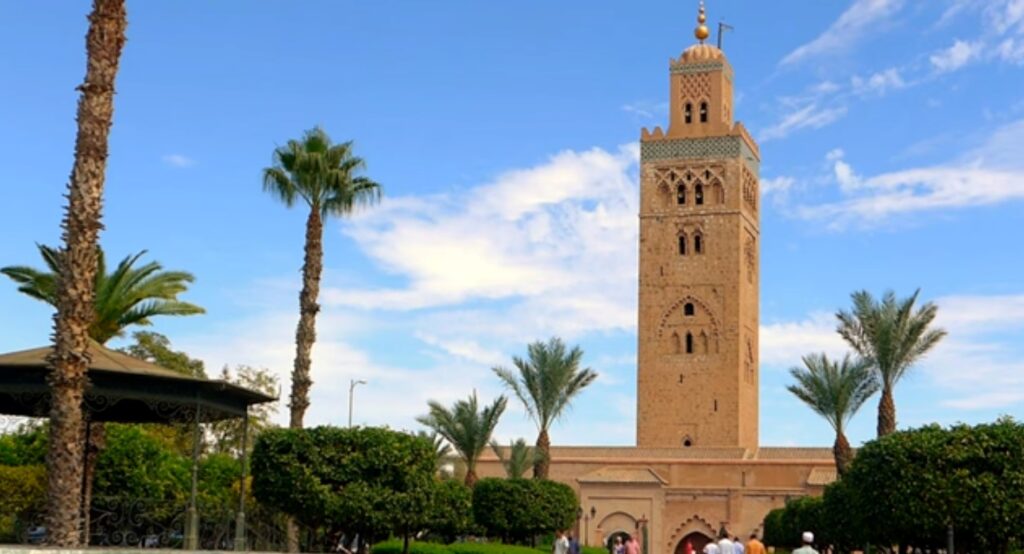 The Koutoubia Mosque is known for its stunning architecture and intricate decoration. The mosque’s exterior is made of red sandstone and features ornate arches, domes, and geometric patterns.
The Koutoubia Mosque is known for its stunning architecture and intricate decoration. The mosque’s exterior is made of red sandstone and features ornate arches, domes, and geometric patterns.
One of the most notable features of the mosque is its minaret, which is the tallest structure in Marrakech. The minaret is topped by a spire and features intricate decoration, including carved Arabic calligraphy and geometric patterns.
The Koutoubia Mosque boasts impressive dimensions, with its minaret standing at a towering height of 77 meters (253 feet). The minaret’s intricate design showcases an array of geometric arch motifs and is topped with a spire and metal orbs, adding to its visual splendor. The exquisite craftsmanship of the mosque’s facade, adorned with floral motifs and arches, showcases the finesse of Almohad architecture.
The mosque’s design is believed to have influenced the construction of other famous landmarks, such as the Giralda of Seville and the Hassan Tower of Rabat, both built during the same era. The minaret’s elegance and height also make it a prominent landmark and a symbol of Marrakesh.
The Tower of the Koutoubia Mosque
The tower of the Koutoubia Mosque is an iconic and majestic minaret that stands as a prominent landmark in Marrakesh, Morocco. Rising to a height of approximately 77 meters (253 feet), the minaret is an exceptional example of Islamic architecture, specifically the Almohad style.
Architecture and Design
The minaret of the Koutoubia Mosque is renowned for its elegant and intricate design. It is constructed with a blend of red stone and brickwork, reflecting the architectural styles of the Almohad dynasty. The minaret is divided into three sections, each adorned with varying geometric arch motifs and decorative elements, showcasing the finesse of Almohad craftsmanship.
At the very top of the minaret is a decorative finial, known as the “Amal” in Arabic. This finial is a traditional feature in Islamic architecture and symbolizes the presence of the divine. The top of the minaret is often illuminated at night, creating a breathtaking sight and further enhancing its significance as a symbol of Marrakesh.
Influence and Inspiration
The Koutoubia Mosque’s minaret has had a profound influence on subsequent architectural designs, both in Morocco and beyond. Notably, it served as an inspiration for the Giralda Tower in Seville, Spain, and the Hassan Tower in Rabat, Morocco, both of which were constructed shortly after the Koutoubia Mosque.
The Giralda Tower in Seville was originally built as part of a mosque during the Almohad period, and its design closely resembles that of the Koutoubia’s minaret. When the Christians conquered Seville, they preserved the tower and incorporated it into the Seville Cathedral, making it a remarkable fusion of Islamic and Christian architectural elements.
Symbolic Importance
The minaret of the Koutoubia Mosque holds significant cultural and historical value for the people of Marrakesh and Morocco as a whole. Its towering presence serves as a symbol of the city’s enduring heritage, religious devotion, and architectural brilliance.
Moreover, the minaret’s call to prayer, known as the Adhan, resonates throughout the city five times a day, inviting the faithful to perform their prayers. The hauntingly beautiful sound of the Adhan has become an inseparable part of Marrakesh’s identity, and it further adds to the symbolic importance of the Koutoubia Mosque’s minaret.
The minaret of the Koutoubia Mosque stands tall and proud, a testament to the rich history and cultural heritage of Marrakesh. With its exquisite design, religious significance, and influence on subsequent architecture, it remains an awe-inspiring sight and an essential destination for visitors and pilgrims in Morocco.
Visiting the Koutoubia Mosque
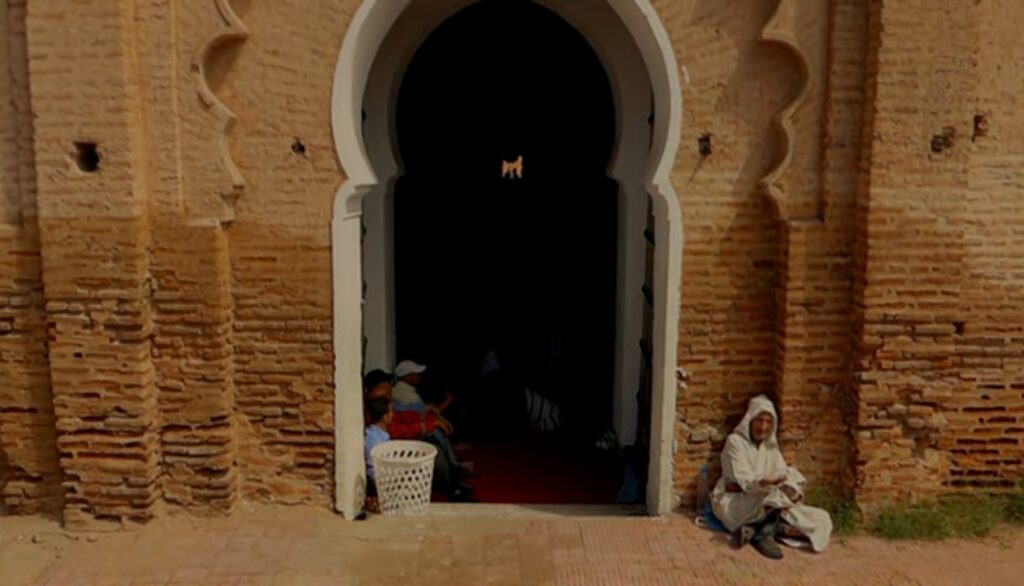 The Koutoubia Mosque is open to visitors every day of the week, although non-Muslim visitors are not allowed to enter the mosque itself. However, visitors can explore the mosque’s exterior and take in its stunning architecture and decoration.
The Koutoubia Mosque is open to visitors every day of the week, although non-Muslim visitors are not allowed to enter the mosque itself. However, visitors can explore the mosque’s exterior and take in its stunning architecture and decoration.
The mosque is located in the heart of Marrakech’s medina, and it is within walking distance of several other important cultural and historical landmarks, including the Bahia Palace and the Saadian Tombs.
Geographical Context
Located approximately 200 meters west of the bustling Jemaa El Fna souq, the Koutoubia Mosque occupies a strategic position in the city. During the French occupation, the city’s road network was developed around the mosque, making it the central landmark in the ville nouvelle. The mosque is flanked by large gardens and overlooks Avenue Mohammed V and Place de Foucauld.
The esplanade of the mosque provides a glimpse of the ruins of the earlier version of the Koutoubia Mosque, which was part of the Ksar al-Hajjar, the original Almoravid fortress built in 1070. The mosque’s vicinity also houses the tomb of Lalla Zohra, a female mystic from the 17th century.
Religious and Architectural Heritage
During the Almohad rule, their religious zeal led them to demolish all existing Almoravid mosques in Marrakesh, including the former Almoravid grand mosque (Ben Youssef Mosque). To replace it, the Almohads decided to construct the Koutoubia Mosque next to the former Almoravid kasbah, which became the site of the new Almohad royal palace.
The mosque’s qibla orientation, a topic of debate among scholars, was slightly different from the “true” qibla used in modern mosques today. However, it aligns with other prestigious mosques of its time, like the Great Mosque of Cordoba and the Qarawiyyin Mosque of Fes, both known for their early origins.
The Koutoubia Mosque stands as a magnificent testament to Morocco’s architectural heritage and religious significance. Its grand minaret, elegant design, and historical connections make it a must-visit destination in Marrakesh. As it continues to attract visitors from around the world, it remains a symbol of the city’s past, present, and cultural identity.
The Koutoubia Mosque is a must-see destination for anyone visiting Marrakech. Its stunning architecture, intricate decoration, and important role in the city’s religious and cultural heritage make it a unique and unforgettable experience. From the towering minaret to the ornate arches and domes, there is something for everyone to appreciate in this iconic landmark.

